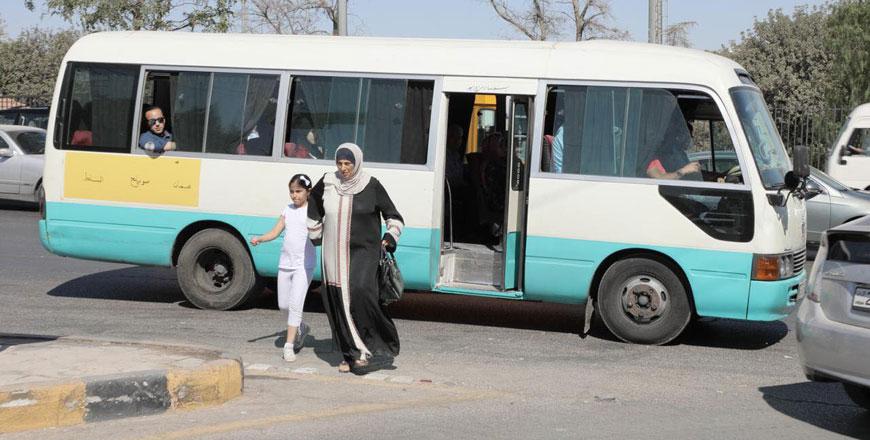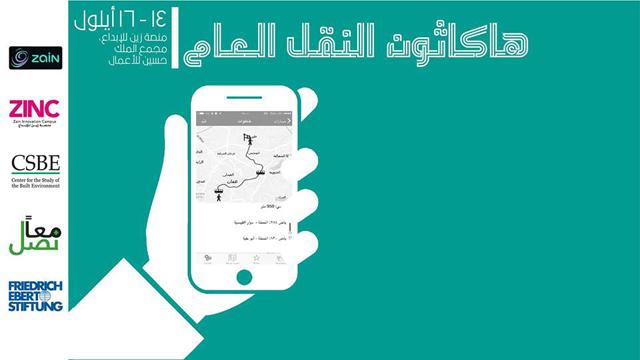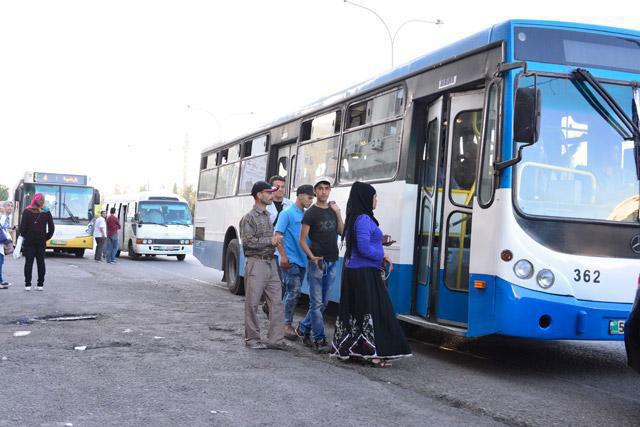You are here
Public transport experts say ‘100 days not enough to create tangible changes’
By Ana V. Ibáñez Prieto - Sep 25,2018 - Last updated at Sep 25,2018

Improving the public transportation system was part of the new government’s list of tasks to address during its first 100 days (Photo by Osama Aqarbeh)
AMMAN — Public transportation experts have voiced their concerns over the 100-days challenge set by the premier, warning that “100 days are far from enough to fix the situation of the sector”.
During the new government’s first press conference in June, Razzaz disclosed the list of tasks that his Cabinet would address during the first 100 days of its tenure, which included several improvements to the public transportation system in the Kingdom.
But the 100-day period set by the Cabinet was “far from sufficient to address the myriad of challenges faced by the public transportation sector” according to Hazem Zureiqat, transport consultant at Engicon and founding member of the public transportation advocacy group Maan Nasel.
“One hundred days are not enough to create tangible changes, as that would require careful planning and reforming the sector on different fronts ranging from operations to regulation,” transport consultant Ali Attari told The Jordan Times in a recent interview, adding that “however, 100 days are indeed enough to evaluate the current state of the sector and to come up with a roadmap for change — and it seems like that is something they have worked on diligently.”
“What the prime minister has done differently is place more emphasis on public transportation in the country’s discourse,” Attari continued, noting that “while that is definitely a respectable start, the government will need to do more to give the sector the priority it deserves”.
“I think we’ve seen some positive signs in identifying the challenges and prioritising solutions,” Zureiqat said, stressing that the premier has continuously referred to public transport as one of his top priorities.
“What’s more important, though, is the tangible solutions that will follow,” he continued, noting that Prime Minister Omar Razzaz “correctly” pointed out the importance of implementing tangible solutions that reflect directly on the user experience.
“For too long, we have been focusing on structural solutions such as creating new companies and getting rid of individual ownership in the sector, seeing these as prerequisites for any other change,” the expert explained, lamenting that “such structural solutions usually require a lot of time, money and political will to be implemented, and there are many other ways in which we could improve existing services in a fairly short period of time”.
Asked about possible solutions to the issues faced by the sector, Attari suggested the activation of the public transportation fund established in the original passenger transport law of 2017, in addition to the creation of a comprehensive plan aimed at determining how to best allocate the funds to transform the current system into one that is “more reliable, comfortable and dignifying for the Jordanian citizen”.
For his part, Zureiqat stressed the role that technology can play in transforming the public transportation sector, noting that “it would allow for the implementation of quick fixes aimed at facilitating the structural, long-term solutions down the road by providing valuable data”.
“One problem that can be addressed using readily available technology is the lack of service reliability,” the expert pointed out, stressing that “providing users with information on the estimated arrival and departure times for public transport can go a long way in improving the user experience — even on existing buses and coasters”.
Questioned about the economic impact of the sector and its development, economist Hosham Ayesh told The Jordan Times that “the government has shown interest in studying the development of the public transportation sector and the introduction of new buses, but in general the sector is in need of a further follow-up, and establishing the practical foundation for its development will be one of the most important inputs on the way to improve its economic performance”.
“The current undertakings alone are not sufficient, and the further development of the transport system would reduce the cost of importing more foreign vehicles, as well as the costs related to the opening of new roads and the establishment of additional bridges and tunnels for the movement of cars,” the economist stressed.
During a meeting of the ministerial economic team at the Prime Ministry in early August, Razzaz urged the concerned agencies to diagnose and suggest solutions to the absence of an efficient urban transportation system, calling for the acceleration of the procedures to approve the draft by-law of the school transport system.
The premier stressed the government’s commitment to take the necessary measures to improve the quality of public services provided to citizens, stressing a message by His Majesty King Abdullah that the government has to provide the “best” services to citizens.
Municipal Affairs Minister, Walid Masri briefed the team on the ministry’s plans and projects to improve the sector, noting that the ministry will focus on mass public transport and mega logistic projects aimed at stimulating the economy.
In addition, Secretary General of the Transport Ministry Anmar Khasawneh briefed the team on the Urban Transport Project, which aims to restructure the transport network and operators in Irbid, Zarqa, Madaba and Salt.
Amman Mayor Yousef Shawarbeh announced that the Greater Amman Municipality will establish a new transportation company with modern buses that accept electronic payment, and Land Transport Regulatory Commission Director General Salah Lozi outlined the challenges that face the sector, including shortage of public transport options, sharing private vehicles for fare, individual ownership, the operational age of vehicles, the arbitrary design of routes and the lack of sustainability in providing services.
Related Articles
AMMAN — Prime Minister Omar Razzaz on Monday urged the concerned agencies to diagnose and suggest solutions to the absence of an efficient u
AMMAN — Over 50 app developers, designers and innovators will gather in Amman to build digital solutions for the public transportation secto
AMMAN — The Greater Amman Municipality (GAM) on Saturday announced measures to improve the public transportation service in residential area



















